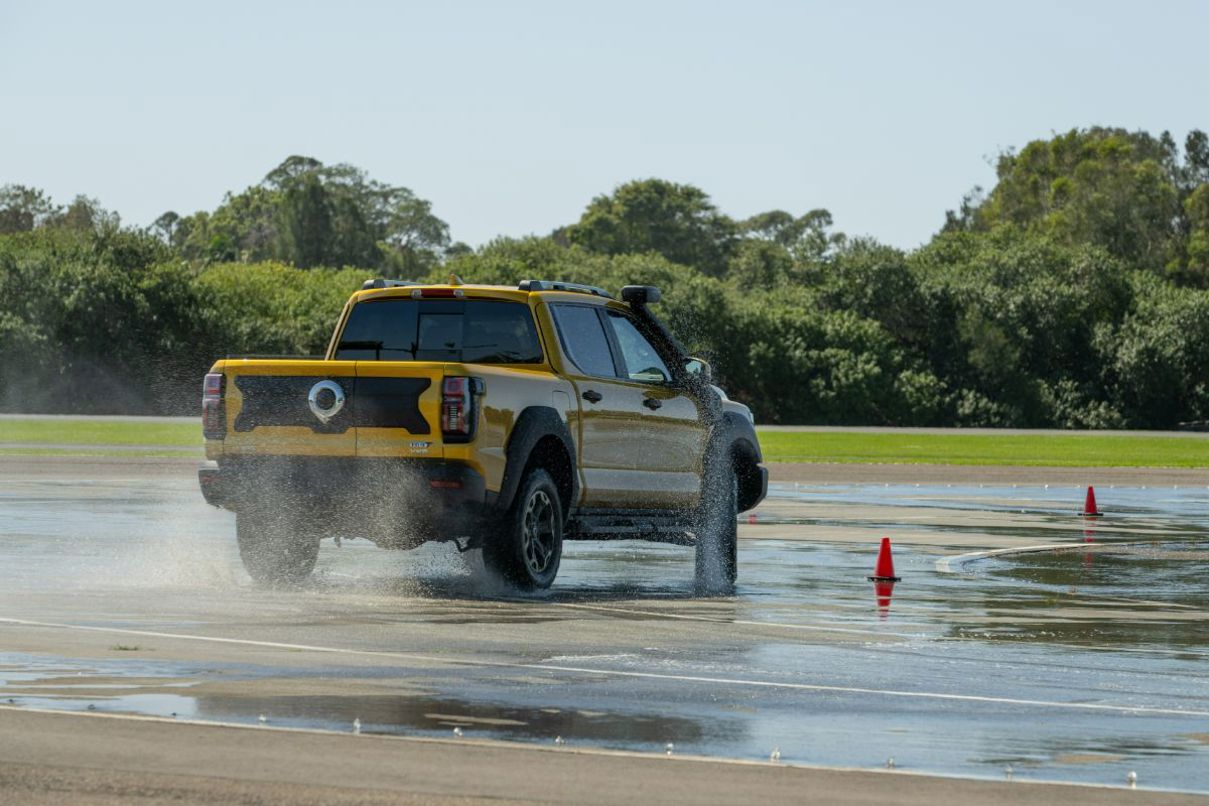Vehicles with a plug are struggling, but GWM still contends electric is the future, with petrol or without.

The brand formerly known as Great Wall Motor was super-secretive about why we needed to come to Queensland’s Norwell Motorplex.
The Tank 500 sports utility and Cannon Alpha utility are already familiar to Kiwis as petrol-electric hybrids. A plug-in "hybrid intelligent" drivetrain is the next step.
So, still 2.0-litre petrol but, instead of a 1.76kWh battery, one rated at 37.1kWh gross, feeding a 120kW electric motor.

GWM cites 300kW/750Nm combined, a 45kW/102Nm. Tank’s 0-100kmh figure, the only one shared, is 6.9 seconds; a 1.4sec advantage.
The extra energy is obvious in the enhanced step-off and into the mid-range, transferring via four-wheel-drive with all the same modes as the hybrids.

PHEVs are thrifty, but here fuel burn claims are so big to seem scarily believable. Can a ute that rates 8.9 litres per 100km as a hybrid really log 1.7l/100km as a PHEV? Curiously, the SUV that is supposedly 0.4l/100km thriftier than the ute without a cable, is thirstier with (2.06). Huh?
Great figures but, if you know PHEVs, you know how hard it is to get close to optimals and, when you do, it’s only fleeting. Also, GWM data is based off WLTC or NEDC formulas; these days NZ prefers WLTP. Toyota Prius-like 66g/km CO2 emission also cites.

Also demanding independent test is GWM citing 110km overall pure electric driving range. Norwell’s technically challenging off-road circuit being undertaken on battery alone was a plus, but at only around 1km, no endurance test.
Reliance on ternary lithium battery chemistry is the breakthrough, GWM says, and in addition to EV aptitude it is great for vehicle to load functionality, with 3.3kWh discharge enough to light up a site and keep the fridge cold.

DC recharging is another plus, when so many are AC-restricted, but put half an hour aside for 30-80%, potentially a lot longer to hit 100%.
The PHEV models essentially equip to NZ-familiar Ultra level, but aren’t twins to what we know. Tank hybrid is a seven seater. Tank PHEV has five chairs. The battery siting right below where the third row would go complicates.

The battery also adds 200kg, which affects the ute’s payload - down from one tonne to 800kg - yet, whereas the Tank loses 500kg in towing, to reduce to 3000kg, the Cannon doesn’t.
However, it’s a different ute to what we have, in that this is the Poer (Mandarin for .. erm, "cannon") version that is GWM’s Ranger Raptor, standing taller than the standard Cannon (by 80mm) and with a rear on coils rather than leaf springs.

GWM had a third vehicle on hand. The Ora Sport, also known as the Lightning Cat/Next Cat, is the more ambitious punt.
The regional office has been toying with their largest electric four-door fastback sedan for a while. This time last year a single motor in long range (703km claimed) seemed a better bet. Now the flagship dual motor 07 Performance we got to drive is in the spotlight.

At this level it engages as a low-slung choice with high-echelon sophistication and some of ours, some of theirs styling. So behind the faintly VW-ish Ora face there’s silhouette similarity to a Porsche Panamera and tail-lights borrowed from Bentley.
The demo car’s cabin being in a tan trim hue seemed bold statement, but it doesn’t shirk high quality materials and seems ergonomically solid. Digital displays are the go, with the driver’s across three individual dials, each with a dedicated function, and most other functionality via the usual iPad on the centre console.

There are no independent crash test scores, just a China Top Safety award, but Ora is proud of a dramatic proof-of-integrity test in which the car launched at 60kmh off a ramp into a pit, flipping several times, after which the doors still opened and there was no fire.
Nothing in the demonstration fleet was road-legal but Norwell’s 2.1km racetrack conceivably seemed a good choice for a car packing 300kW/680Nm, a driving position set lower than the rear seat, Michelin Pilot rubber and an electrically-operated adaptive rear spoiler said to increase downforce by 20kg. Conceivably.
The headline 0-100kmh time of 4.3sec is enlivening, but the car otherwise struggled to impress. The 2100kg weight simply overwhelms dynamic flair even with dampers on firmest Supersport and so-so brake feel and none at all from the steering hardly helped. It needs a retune if it’s to be a foil to the Tesla Model 3, Hyundai Ioniq 6, Polestar 2 and BYD Seal.
Whether any of these products will call NZ home remains undecided. Media and dealer reaction will help decide if GWM progresses with 2025 introduction. Price is a clear factor and, on that, they say the PHEV premium would be at least $6000 over the hybrids.
























